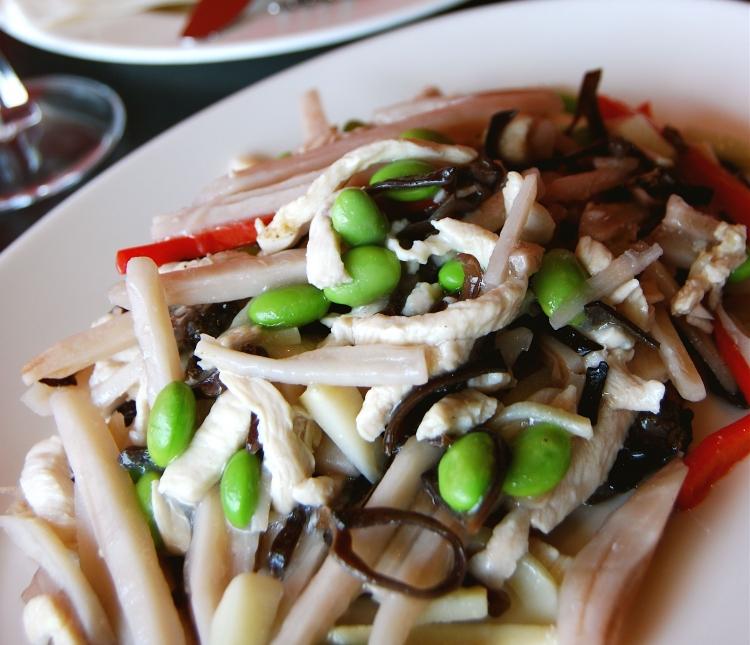In Chinese culture, food, and medicine are closely related. The practice of traditional Chinese medicine places great emphasis on achieving balance in one’s body for the regeneration of the body’s systems and organs. This balance is referred to as yin and yang. An important aspect in attaining a balanced yin and yang is a well-rounded nutrition with at least five varieties of colors.
While the principles of yin and yang are relatively unfamiliar to the Western world, the Chinese have been practicing it since the third century. Over 3,000 years ago, the Yellow Emperor wrote in his classic book on internal medicine, Huangdineijing, that if people wanted to obtain health and longevity, they should eat food with “five colors, five tastes, and five fragrances.”
A multicolored diet is especially important in Chinese food and medicine, as it is believed that colors (red, yellow, green, white, and black) are associated with the body’s vital organs (heart, spleen, liver, lungs, and kidneys). Colors are also related to the five main elements (fire, earth, wood, water, and metal) found in nature.
Doctor Ming Zhou, a Chinese internist, says that in Chinese medicine not only is it important to reach a balance within oneself but also to attain harmony with nature. This is why associating colors and organs with elements are so important.
According to Dr. Zhou, the color groups provide the following benefits for the corresponding organs:
White (metal) food: White foods give people a clean feeling and purifies the lungs. They are good for adjusting the vision and calming emotions. Examples of white foods are jicama, mushroom, onion, parsnips, cauliflower, shallots, and turnips.
Green (wood) food: Green is the color of life and impacts the liver. It is a fundamental link in the food chain, and green food is the food source of people and animals. Examples of green foods are avocadoes, spinach, green grapes, and broccoli.
Black (water) food: Black impacts the kidney. The kidneys are the fatal organ amongst the five organs and the origin of life. Examples of black foods are black mushroom, woodear, sea cucumber, century egg, black sesame, and black rice.
Red (fire) food: Red impacts the heart. Eating more red-colored food can help one’s immune system and prevent colds. Examples of red foods are red apples, strawberries, tomatoes, and beets.
Yellow (earth) food: Yellow corresponds to the spleen. The spleen transforms and transports the energy from food and drink throughout the body. Yellow foods also correspond to the stomach. Examples of yellow foods are corn, yellow peppers, cantaloupe, and pineapples.
The benefits of a color-rich diet are also recognized by Western nutritionists. In the 2005 Dietary Guidelines for Americans, some of the recommendations include adding the following color-rich foods to one’s diet: dark green vegetables, orange vegetables, legumes, fruits, whole grains, and low-fat milk products. The guidelines were released by the U.S. Department of Health and Human Services and the U.S. Department of Agriculture.
Marla Caplon, nutritionist and supervisor for the Division of Food and Nutrition Services for the Montgomery County Public Schools in Maryland, agrees that a diet rich in an array of colors can clearly be a contributor to good health and well-being.
According to Caplon, yellow and orange fruits and vegetables, rich in beta carotene, Vitamin A, and Vitamin C contain powerful antioxidants that neutralize free radicals. Green vegetables are rich in phytochemicals and are good sources of iron, calcium, vitamins K, A, and C. Blue and purple fruits and vegetables contain anthocyanins, which are powerful antioxidants that help the prevention of heart disease, stroke, and some types of cancer. The red group contains lycopene, an antioxidant that can help protect against cancer. Foods high in lycopene may also help reduce the complications from and control high blood pressure. The white group contains allicin, which has been known to help lower blood sugar and have amazing anti-inflammatory and anti-bacterial properties. This group also contains powerful antioxidants, which help to protect against cancer and heart disease.
Caplon says that a colorful diet is visually appealing and can enhance one’s appetite.
So what is the best way to go about creating a multicolor diet?
Edward Shen, the owner of Seven Seas Restaurant in Rockville, Maryland is highly supportive of the multicolor diet and uses this concept in dishes served at the restaurant.
A restaurateur for 21 years, Shen always recommends that his customers order a variety of foods.
“Food at the table should look like an artist’s palette. To create dishes that have vibrant colors and are nutritious, you need to experiment with different ingredients. Mix and match to see if the colors and flavors blend together well, says Shen.
“Stick to the five main color groups when choosing what to feed your family. If you are making a dish that uses only one or two colors, use your creativity and add a few more.
“For example, if you make a beef dish with onions, the dish will look dull and lifeless. You can color your dish by throwing in some green scallions, red peppers and yellow zucchini. Add flavor by using seasonings like black pepper.
“Learn to be adventurous with your food. It is only through having a multicolor diet that you can receive the full benefits from your food.”






